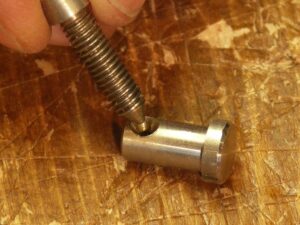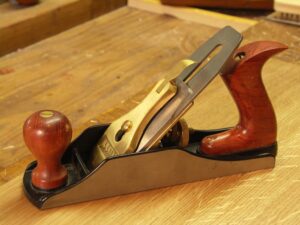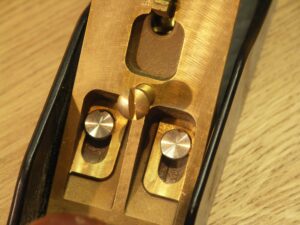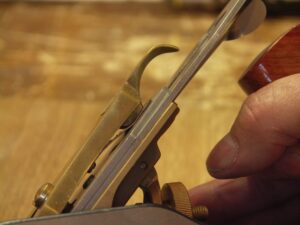Jumma hand plane update


Your growing interest in the Jumma smoothing plane deserves some inside information. I have put this plane through its paces of late and found it to satisfy my greatest demands. Can I fine a better make anywhere? I don’t think so. This plane equals the best of the rest and researching its background encourages me to see that where the rest left off, Jumma saw the niche and took up the slack. Dieter Schmid invested in his belief that woodworkers needed an affordable plane and came up with the goods without compromising quality.

I took a look at the inside details before I ever wrote the article on it for The Woodworker magazine three months ago. It’s got sumptuous castings that hold up well and the machining tolerances are great. Take a look at the minutiae that make up the core essentials and see what you think. Stainless steel pins and threaded adjustments means no rusted parts and the core of the Bedrock details established almost a century ago and abandoned for decades now live on in the Jumma models produced by Dieter Schmid and his Fine Tools company based in Europe. I think we will see more of this type of development as the standards amatuer woodworkers demand match and even surpass those accepted by the professionals.

I use this one as part of my woodworking demonstrations in my woodworking courses here at the woodworking school and also other woodworking schools I attend at. This model shows the impact we woodworkers are achieving in increasing the demands for high quality tools to parallel high quality, at-the-bench instruction in the artisan workshops around the globe. These types of tools go hand in hand with our Campaign for Real Woodworking strategy because these are real tools equal to the task and indeed fit for purpose.


Consistency can be an issue with imported planes I have seen. Son’t know about this one. I got a good one. I have bought half a dozen STanley 4s and 4 1/2’s on eBay this week and they have all been excellent. I am doing YouTube on them for my next video on fettling, sharpening and using – soon to be released free online.
I was wrong, the Juuma plane was not the plane I had read about. It was a Wood River # 4 plane sold by Woodcraft here in the US. Sorry for the misinformation.
About “consistency” I’ve bought one n° 7 in Feb 2016 and it’s still very well made plane. My only complain is the rear tote that is too short for my fairly big hands and too close from the casting leaving bruises on my little finger after two hours of planning. Maybe it’s the price we have to pay for ‘real woodworking” as you like to say. Regards
Jean Pierre, I wonder if you are holding your plane correctly. How many fingers do you wrap around the totle, 3 or 4? When you hold the tote, where do you put your index finger? It should normally point forward along the side of the plane.
“Be careful what you wish for, it may come true.” – somebody much wiser than me.
What is the difference between a “Bedrock” plane & non-Bedrock plane? I seem to recall that Paul likes both well enough. Is it simply that the mouth is not adjustable on the Bedrock, because the frog is fixed, cast into the base? If so, is there no real benefit to an adjustable frog? (My own experience is that I have found it useful in reconfiguring my old #4 plane from smoothing duties to coarser work, flattening greenwood.
Both are adjustable but the bedrock always, always alters the depth of cut when you adjust it. Very negative and very under spoken of. It’s a problem. Also, modern makers for some very silly reason make them far too, too heavy.